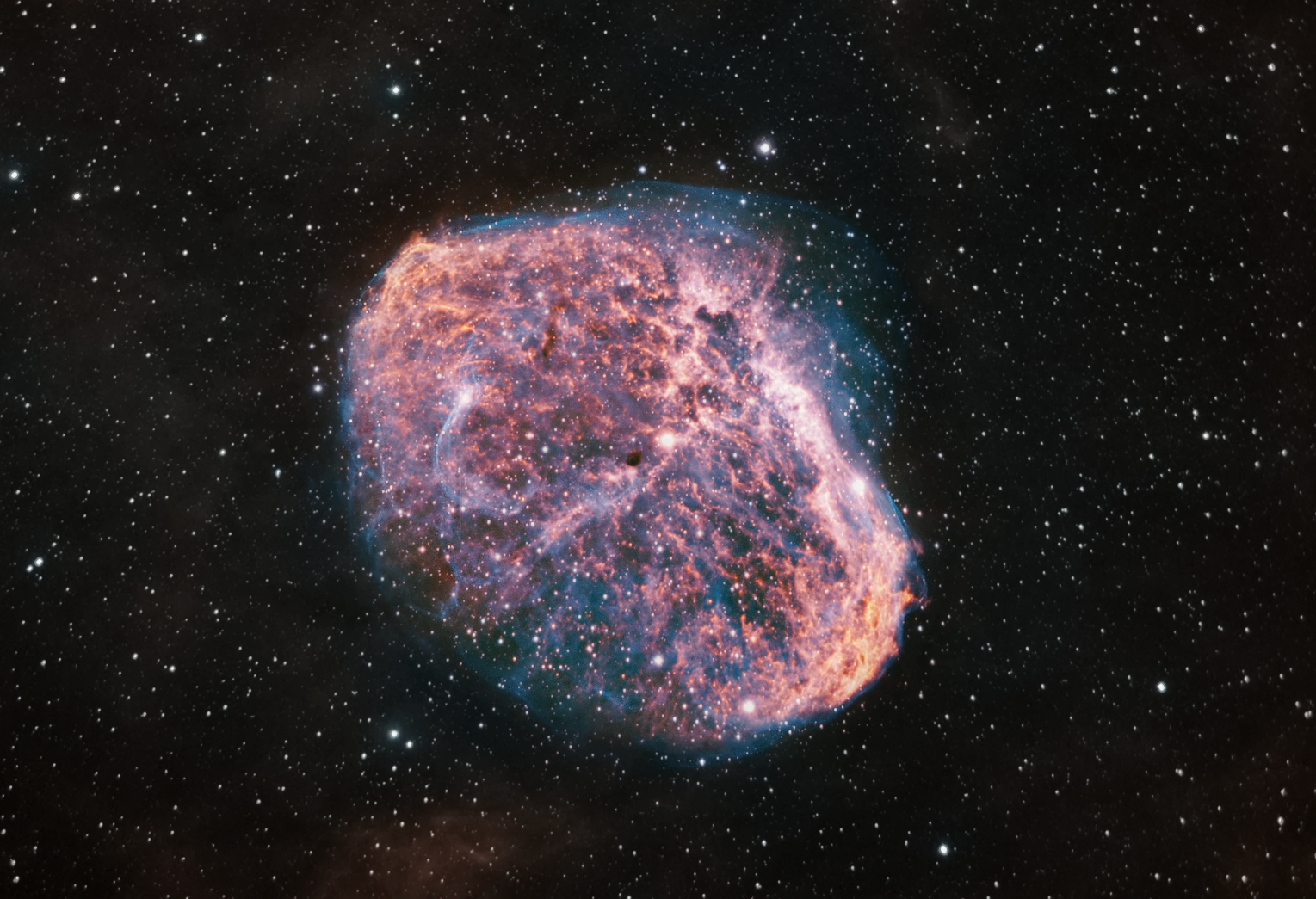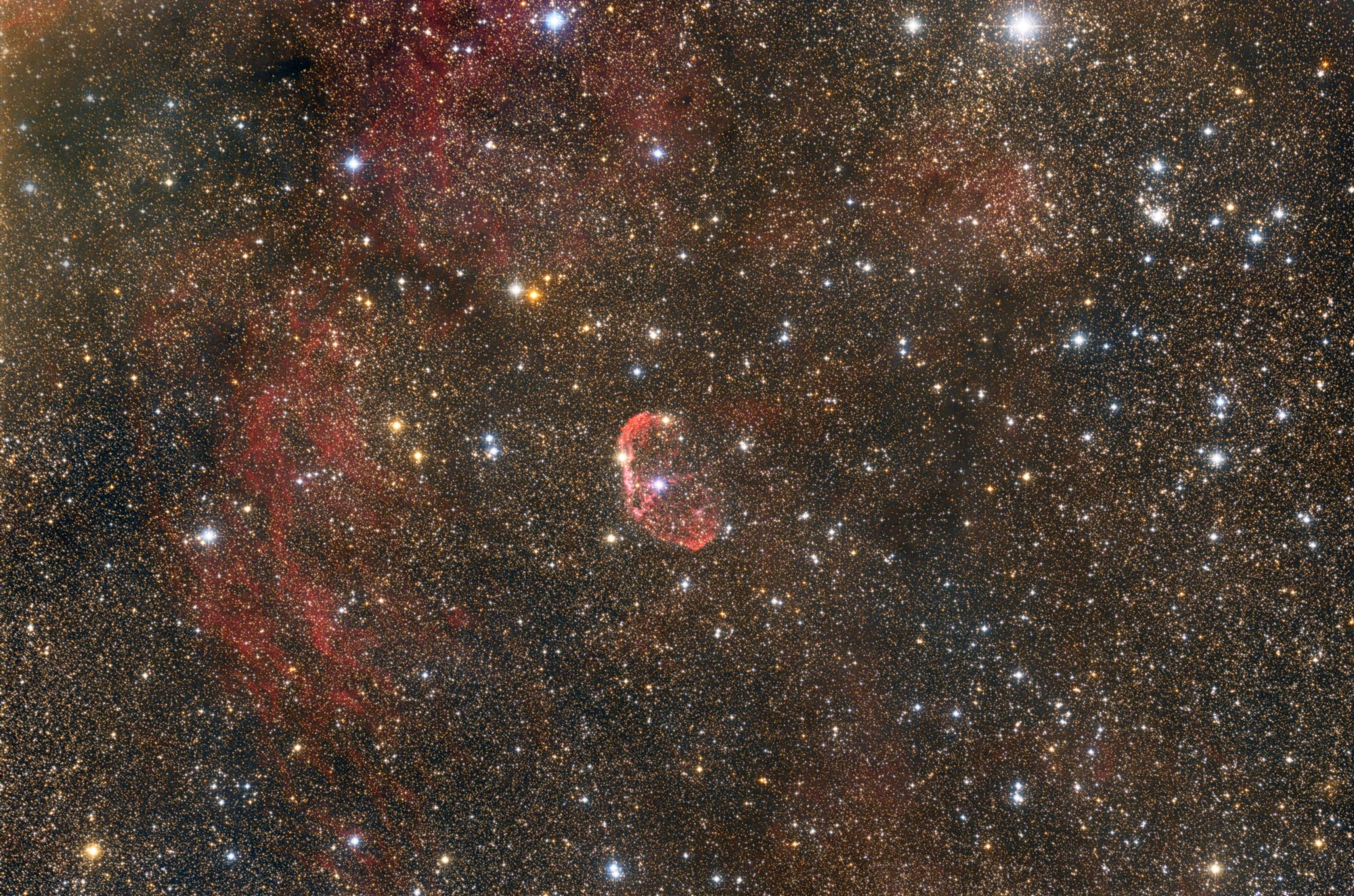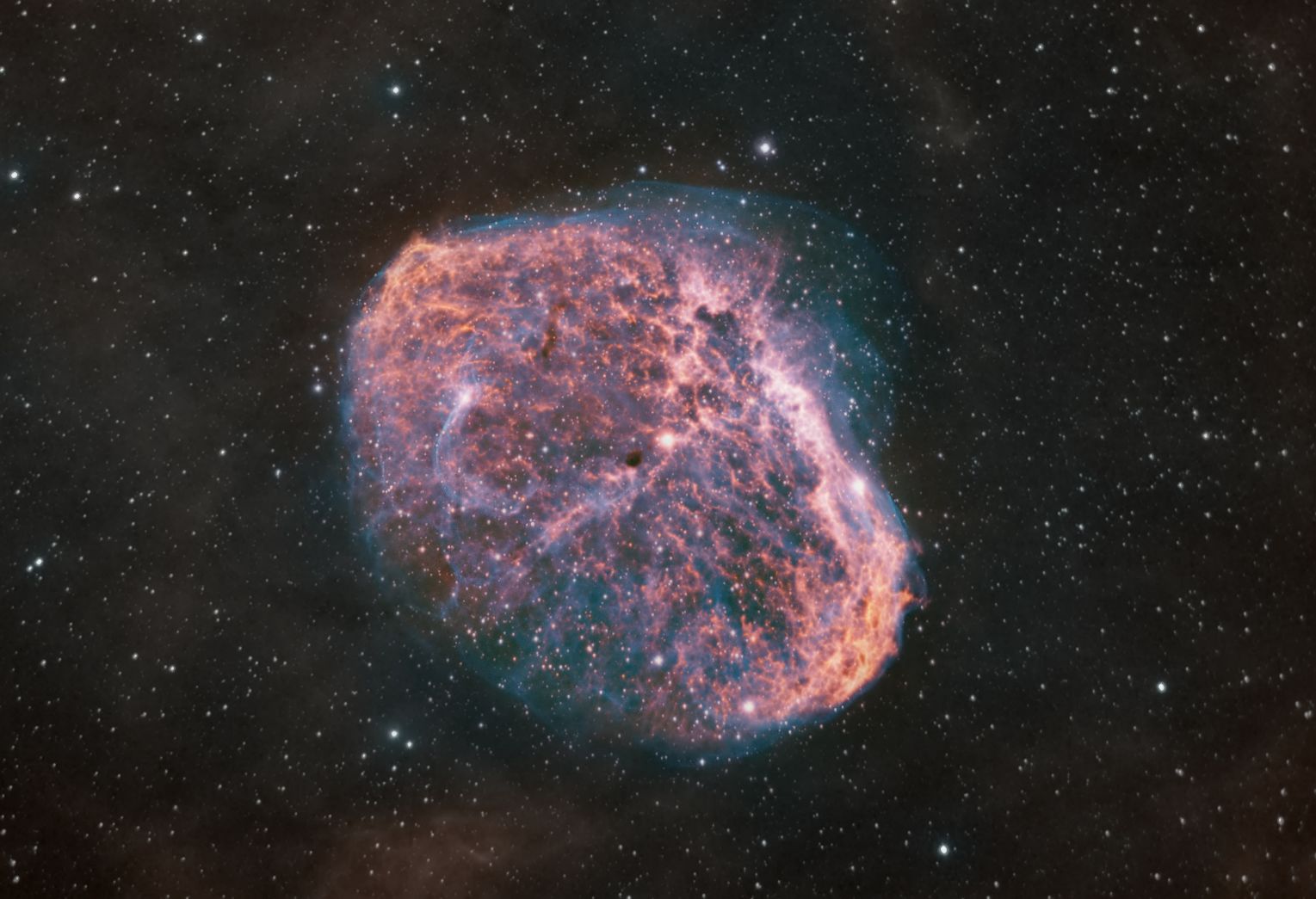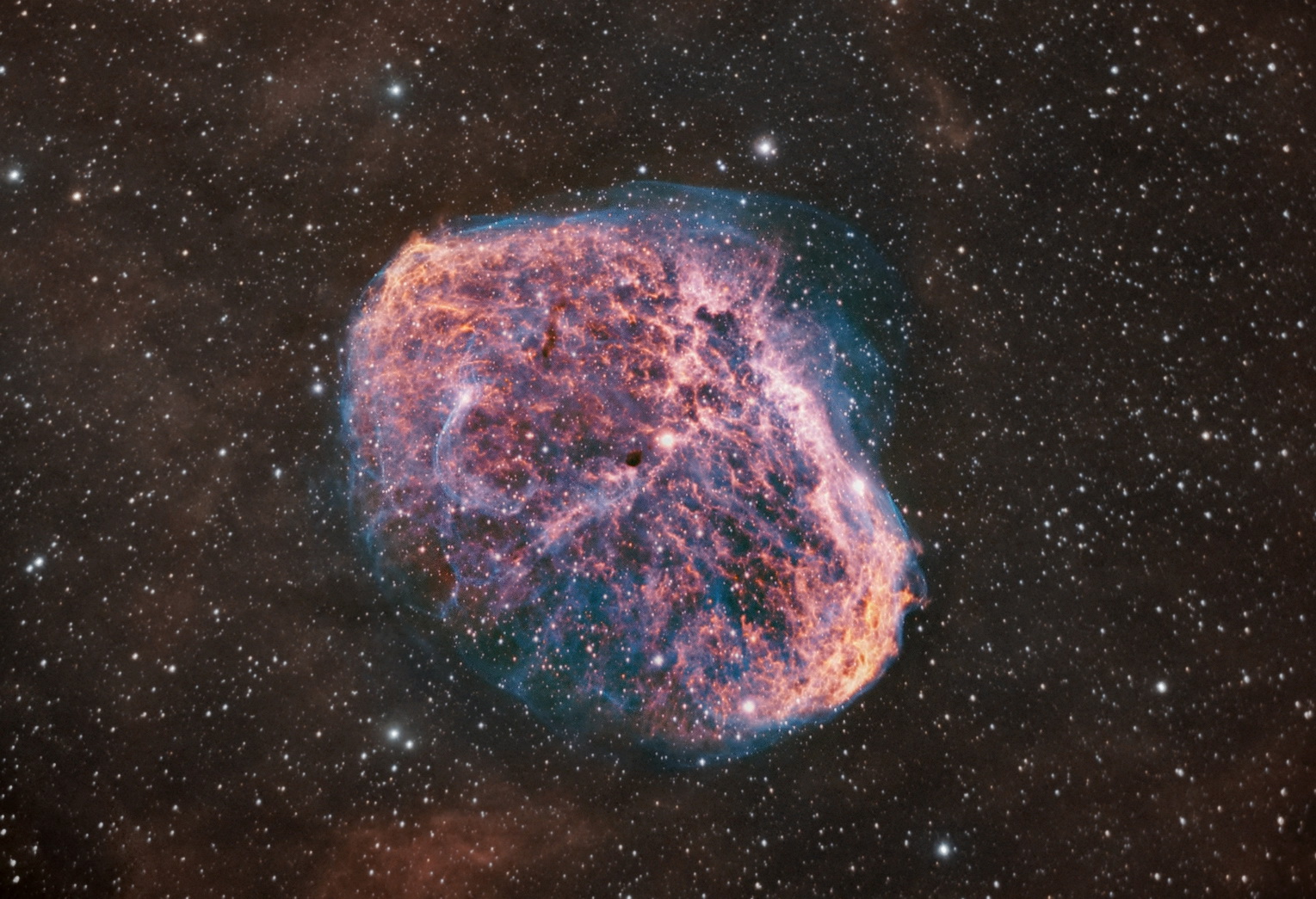
Optics/mount : 12″ACF 2.7m AP-Reduzer Alt-5
Camera/filters: Atik 11002 AstrodonHa/OIII
Exposure:39×600 Ha and OIII all 2bin
12 August 2016
My second attempt to take a deepsky photo of this nebula. My first attempt
The Crescent Nebula (also known as NGC 6888, Caldwell 27, Sharpless 105) is an emission nebula in the constellation Cygnus, about 5000 light-years away from Earth. It was discovered by Friedrich Wilhelm Herschel in 1792. It is formed by the fast stellar wind from the Wolf-Rayet star WR 136 (HD 192163) colliding with and energizing the slower moving wind ejected by the star when it became a red giant around 250,000 to 400,000[citation needed] years ago. The result of the collision is a shell and two shock waves, one moving outward and one moving inward. The inward moving shock wave heats the stellar wind to X-ray-emitting temperatures.
It is a rather faint object located about 2 degrees SW of Sadr. For most telescopes it requires a UHC or OIII filter to see. Under favorable circumstances a telescope as small as 8 cm (with filter) can see its nebulosity. Larger telescopes (20 cm or more) reveal the crescent or a Euro sign shape which makes some to call it the “Euro sign nebula”.@wiki
La nébuleuse du Croissant (NGC 6888) est une nébuleuse en émission située dans la constellation du Cygne, à environ 5 000 années-lumière2. Elle est issue des rapides vents solaires créés par l’étoile Wolf-Rayet WR 136 (en), qui -par collision- ionisent les vents plus lents de cette même étoile lorsqu’elle était plus jeune et plus petite (de type géante rouge) il y a 400 000 ans. Le front de choc engendre ce que l’on nomme une bulle de Wolf-Rayet.@wiki
A version with stronger backround dust
At last a wide field version taken in 2013 with the 180 Epsilon ant the QHY 12 camera.


